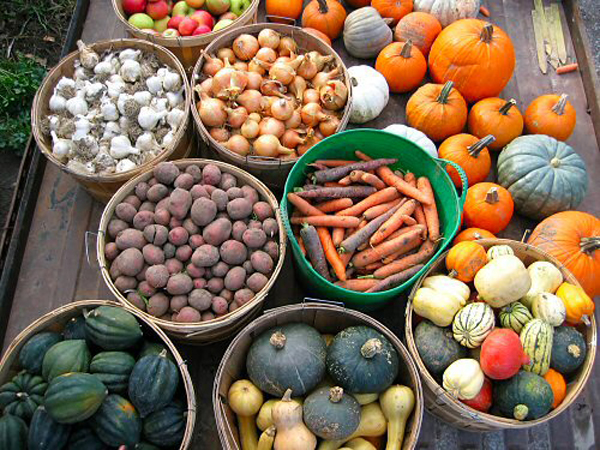
The very first step in making healthier and tastier food is buying fresh vegetables and fruits in season from roadside vendors, farmerâs markets or growing them by yourself. Eating fresh vegetables and fruits is always beneficial. In fact fresh products are more flavorful and healthy.
Let the seasons decide your menu
Tim LaBant is a chef and proprietor of The Schoolhouse Cannondale, a restaurant in Wilton, Conn. He believes that he learnt cooking as per the four seasons and regards the same as the natural way of life which of course isn’t a new concept to deal with.
Eating seasonal dishes is definitely advantageous. To explain this, LaBant suggests buying two-three organic apples from supermarket and the same from small farms and then compare their taste. You will find that the apple you are eating in the fall is tastier than the so called âSuper appleâ. LaBant also supports the small farmer who grows a lot healthier food for us. He says that these are the âBasics of seasonal cookingâ. In fact, he also suggests having a garden of your own as this will let you to know basic connection of food. This will also bring out the creative part of yours when you see the tomatoes ripening overnight and you will understand all the things that the small farmers have to pass through.
Which Foods to buy and when
Though many areas of the country are known by the variety and types of food that grow at certain times, but fresh and healthy fruits and vegetables grow during a particular season. All the fruits and vegetables do not grow throughout the year and are available in the specific season. There are 4 seasons in a year. All the four seasons have their own specialty.
1. Spring
Fresh vegetables like radishes, ramps (soft onion), mushrooms and strawberries, leafy greens like arugula and mache and peas are the specialties of this season.
2. Summer
âStone fruitsâ like apricots, peaches and nectarines, string beans, cucumbers, beets, raspberries, cherries, blueberries, eggplant, melons, Brussels, peppers, corn, potatoes are grown in large scale during summers.
3. Autumn
The nights are cool. Apples, broccoli, pears, kale and cauliflowers are produced during this time.
4. Winter
Winter produce bounty includes root vegetables like celery roots, turnips, winter squash, sweet potatoes, parsnips, rutabagas and carrots.
Make sure itâs locally grown
There are a number of ways to find if the vegetables and fruits are grown locally and in season in your farmerâs market. First of all, there are some rules in the farmerâs market and they decide what is to be sold. Now, if itâs a market of the âProducer onlyâ, the vendors must have grown the food or made the food for selling. And if âCarryingâ is not restricted, vendors may carry the products and sell those products which are made somewhere else. To ensure that the freshness remains intact, many markets put restrictions on the distances and areas till where the vendors or the farmers can travel. And the farmers are bound to limit their areas and obey the local laws from handling to labeling. They have to adhere to the national state.
LaBant suggests that the common people should engage farmers in a conversation and learn to develop supplier-customer relationship. The customers can ask their farmers the question regarding their land, whether the methods they are implying are natural and sustainable and if they weed by hand. This will help you also to know âThe Basicsâ. And if the farmer is passionate about his work, he will answer to all your questions very well.




